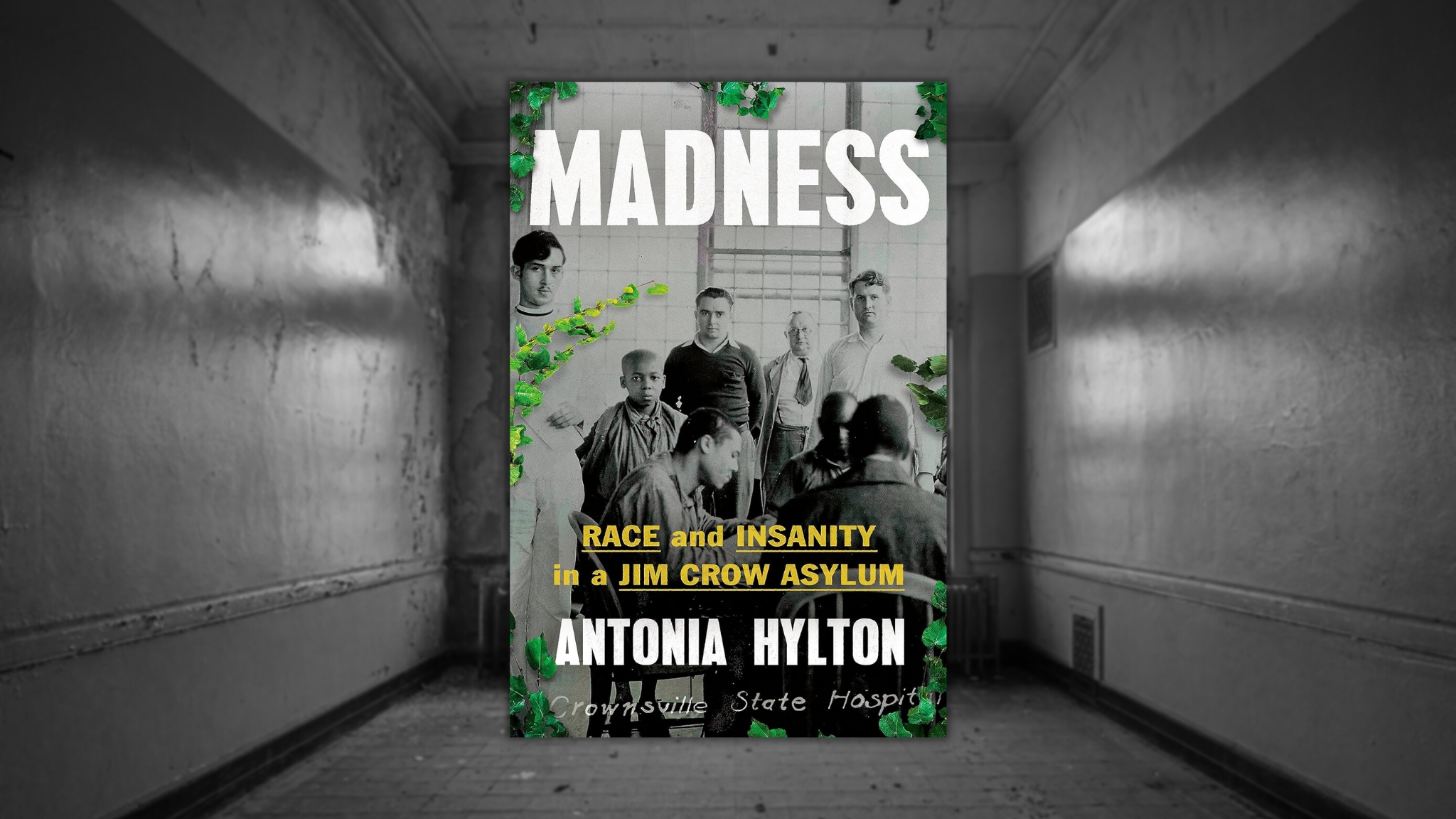Madness: Race and Insanity in a Jim Crow Asylum by Antonia Hylton
When she began studying the history of medicine at Harvard in 2011, Antonia Hylton found herself captivated by the development of modern psychiatry. But she kept wondering where Black people fit into that history.
As the award-winning journalist writes in Madness: Race and Insanity in a Jim Crow Asylum: “What has happened to Black people when they, their families, or their communities went mad?”
Grueling History of the Hospital for the Negro Insane
Hylton’s search for those particular stories, along with anguished knowledge of mental illness within her own family, led her to Crownsville, Maryland. There, on the state’s infamously segregated Eastern Shore, less than ten miles from its picture-perfect capital, Annapolis, twelve Black men cleared land for an asylum on a chilly March day in 1911.
They built the Hospital for the Negro Insane for themselves and thousands of Black patients who would follow. It was an immoral proposition from the start, based on the premise that freedom from slavery had damaged Black Americans; that instead of improving their lives, emancipation had fomented insanity, confusion and aggression.
Many eighteenth- and nineteenth-century theories about mental illness were, Hylton observes, based on flimsy medical experiments and prejudice. And that was even before white physicians turned their attention to the trauma that afflicted enslaved Black men and women.
In 1851, that trauma was named “Drapetomania” by Samuel Cartwright, a white university professor who attributed it to “the irrational and unnatural desire of a slave seeking freedom,” Hylton explains.
Not degradation, defamation, segregation, exploitation, forced labor, the threat of lynching or constantly looking over one’s shoulder — no, none of those experiences could explain the rise in mental illness among the nation’s Black population after the Civil War. Therefore the remedy, according to most white physicians, would be more neglect and physical abuse.
Fiendish Treatment for Those with “Mental Illness”
Inside the new Hospital for the Negro Insane, a fiendish superintendent named Dr. Robert Winterode would reign for 30 years, implementing a program that improved not a single life, only deepened despair.
Winterode, who lived on the hospital campus with his family in a plantation-style house, believed in isolation cells, permitted children to socialize and sleep with adults, and implemented “industrial therapy,” in which patients were loaned out to local farms and factories. If compensated, they received a pittance.
Winterode also collaborated with the local police and businessmen. Men and women, even children often disappeared into the hospital against their families’ will or without their families’ knowledge.
You didn’t have to show mental illness in order to be admitted: vagrancy, uncooperativeness, physical disablement — anything could land a Black person in the asylum.
Harsh Memories and First-Hand Stories
In the course of researching Madness, Hylton petitioned to review state archives, a request finally granted. But she was hobbled by redactions and, she writes, “the cryptic nature of mental health records.”
Here, Hylton’s journalistic skills served her well as she tracked down more than 40 Black men and women who had once been patients or employees at the Hospital for the Negro Insane. Recounted in oral histories, their memories are harsh and detailed, and they fill in the story of the hospital after Winterode’s departure, through World War II, and into the twenty-first century. (It closed in 2004.)
Readers may be shocked by the devastation that Hylton reveals, the stories of meager lives without a future even before the hospital destroyed all hope. Yet for anyone interested in American history, it is a very important book.
The author weaves together institutional and government records, newspaper accounts, and oral history to examine yet another untold story about Black life and culture in the U.S. And she tries to answer an extraordinary question: who wouldn’t go mad living in the bitter Jim Crow world that followed the Civil War and has not yet been fully abolished?
 About Antonia Hylton:
About Antonia Hylton:
Antonia Hylton is a Peabody and Emmy-award winning journalist at NBC News reporting on politics and civil rights, and the co-host of the hit podcast Southlake and Grapevine. She graduated magna cum laude from Harvard University, where she received prizes for her investigative research on race, mass incarceration and the history of psychiatry. She lives in Brooklyn.




